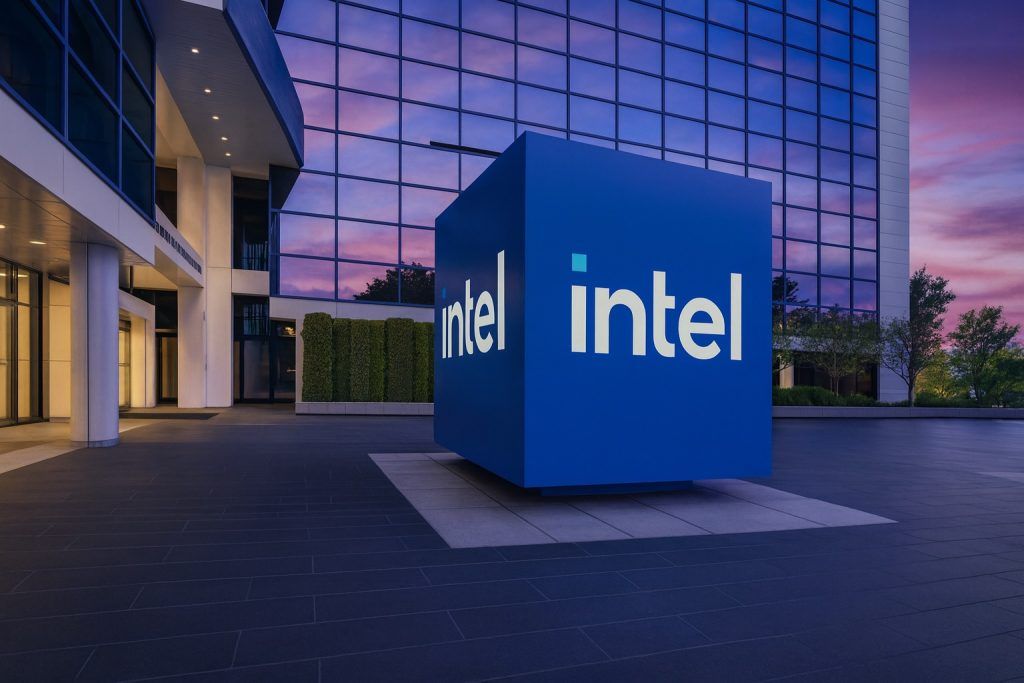- $80B Reactor Partnership: On Oct. 28, Cameco (NYSE: CCJ) and partner Brookfield announced a U.S. government–backed deal to finance and build at least $80 billion of new Westinghouse nuclear reactors [1] [2]. The agreement “aims to accelerate nuclear power deployment” and meet surging electricity demand from AI and data centers [3], reinforcing the current nuclear revival.
- Shares Surge: CCJ stock jumped roughly 10–15% on the news [4] [5], continuing a massive 2025 rally. Year-to-date CCJ is up ~65–80% (vastly outperforming the S&P 500) on tight uranium supply and rising demand [6] [7]. Analysts note Cameco’s “low-cost, diversified mines and fuel business” make it a relatively safe play that “earns profits now and will steadily benefit if uranium prices stay strong” [8].
- High Uranium Prices: Uranium spot prices are trading in the mid-$70s per pound [9] (multi-year highs), and many firms forecast further gains toward $80–$100/lb [10]. Supply is tightening – Cameco recently cut its 2025 production guidance to ~14–15M lbs (from 18M) due to mine delays [11], and Kazakhstan’s Kazatomprom has also curbed output. One analysis notes “revived interest in nuclear power… is providing the demand” even as supply has tightened [12].
- Pro-Nuclear Policies: Global policy tailwinds are strong. The U.S. has poured billions into advanced reactors (FY2024 DOE budget ~$50B) and passed laws to speed SMR approvals [13]. Europe, Asia and other regions are also greenlighting new projects [14] [15]. Reuters reports the $80B deal aligns with President Trump’s May nuclear executive order [16]. Such support has revived dozens of projects worldwide [17], bolstering Cameco’s outlook.
- Analysts Bullish: Wall Street is largely positive on CCJ. MarketBeat notes a consensus analyst “Buy” rating, with an average price target around $90 [18]. (By comparison, CCJ closed ~$88 on Oct. 24 [19].) Research reports highlight Cameco’s industry-leading reserves, low debt and long-term contracts for stable cash flow [20]. CEO Tim Gitzel calls the new partnership “value creation” that will enhance Cameco’s fuel supply role [21]. At the same time, experts caution that nuclear projects have long lead times and regulatory risks [22], so investors are watching execution of reactor plans closely.
- Next Steps: Cameco will report Q3 results on Nov. 5, 2025 [23]. Investors will look for updates on sales and costs – after strong H1 results, management said its “balanced and disciplined strategy” can weather the McArthur River mining delays [24]. Given the uranium bull thesis (WNA sees demand +28% by 2030 [25]) and Cameco’s position, most analysts remain optimistic about CCJ’s medium-term trajectory.
In sum, Cameco is squarely in the spotlight of today’s nuclear energy boom. The U.S. reactor pact and robust uranium fundamentals have driven a powerful rally. Industry watchers say Cameco’s vast reserves and fuel-cycle assets make it a go-to name for playing the “second act” of nuclear power [26] [27]. However, as one commentator puts it, investors should still “weigh valuations and monitor” policy and supply trends [28]. With uranium prices up and governments supporting nuclear, Cameco’s near-term outlook is bright – but execution of these big reactor plans and any global supply shifts will ultimately determine whether CCJ can sustain its gains.
Sources: Recent Cameco press releases and filings [29] [30]; Reuters and investing.com coverage of the $80B reactor deal [31] [32]; TS2.tech and NAI500 market analyses [33] [34]; uranium industry data [35] [36]; MarketBeat and company data [37] [38].
References
1. www.reuters.com, 2. ca.investing.com, 3. www.reuters.com, 4. www.reuters.com, 5. ca.investing.com, 6. ts2.tech, 7. ts2.tech, 8. ts2.tech, 9. ts2.tech, 10. ts2.tech, 11. www.mining.com, 12. ts2.tech, 13. ts2.tech, 14. ts2.tech, 15. www.reuters.com, 16. www.reuters.com, 17. ts2.tech, 18. www.marketbeat.com, 19. www.cameco.com, 20. ts2.tech, 21. ca.investing.com, 22. ts2.tech, 23. www.marketscreener.com, 24. www.cameco.com, 25. www.reuters.com, 26. ts2.tech, 27. ts2.tech, 28. ts2.tech, 29. www.marketscreener.com, 30. www.cameco.com, 31. www.reuters.com, 32. ca.investing.com, 33. ts2.tech, 34. ts2.tech, 35. www.reuters.com, 36. ts2.tech, 37. www.marketbeat.com, 38. www.cameco.com










